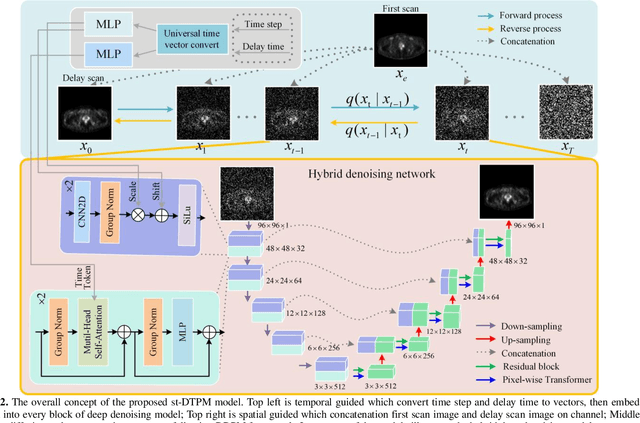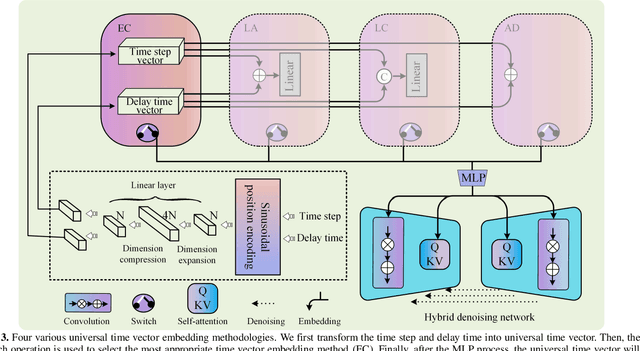Ran Hong
st-DTPM: Spatial-Temporal Guided Diffusion Transformer Probabilistic Model for Delayed Scan PET Image Prediction
Oct 30, 2024



Abstract:PET imaging is widely employed for observing biological metabolic activities within the human body. However, numerous benign conditions can cause increased uptake of radiopharmaceuticals, confounding differentiation from malignant tumors. Several studies have indicated that dual-time PET imaging holds promise in distinguishing between malignant and benign tumor processes. Nevertheless, the hour-long distribution period of radiopharmaceuticals post-injection complicates the determination of optimal timing for the second scan, presenting challenges in both practical applications and research. Notably, we have identified that delay time PET imaging can be framed as an image-to-image conversion problem. Motivated by this insight, we propose a novel spatial-temporal guided diffusion transformer probabilistic model (st-DTPM) to solve dual-time PET imaging prediction problem. Specifically, this architecture leverages the U-net framework that integrates patch-wise features of CNN and pixel-wise relevance of Transformer to obtain local and global information. And then employs a conditional DDPM model for image synthesis. Furthermore, on spatial condition, we concatenate early scan PET images and noisy PET images on every denoising step to guide the spatial distribution of denoising sampling. On temporal condition, we convert diffusion time steps and delay time to a universal time vector, then embed it to each layer of model architecture to further improve the accuracy of predictions. Experimental results demonstrated the superiority of our method over alternative approaches in preserving image quality and structural information, thereby affirming its efficacy in predictive task.
 Add to Chrome
Add to Chrome Add to Firefox
Add to Firefox Add to Edge
Add to Edge